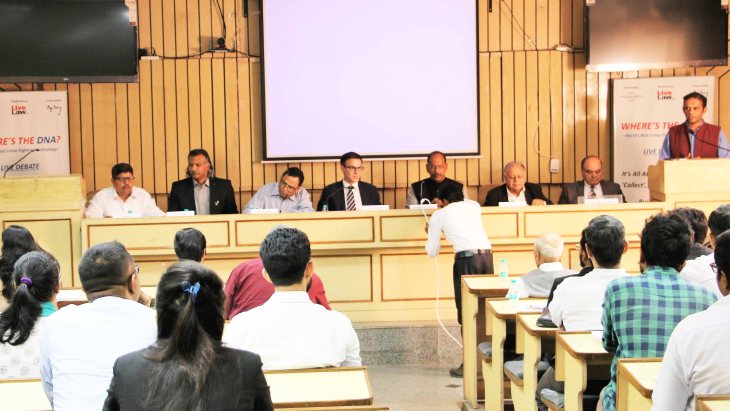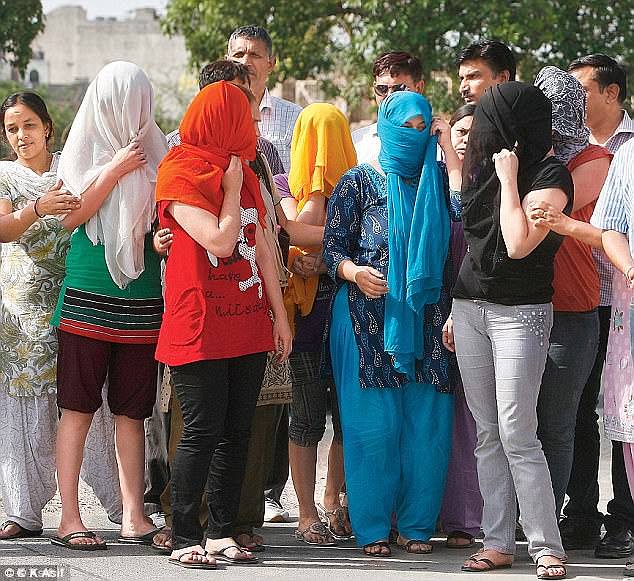

Inadequate resources, lack of trained personnel including quality counsellors, and ways to mitigate final compensation to the victims are some of the major hurdles that the rehabilitation process faces.
The rehabilitation of trafficked children is proving to be a major challenge for Child Welfare Committees (CWCs), Child Care Institutes (CCIs) and non-governmental organisations working for child welfare and protection across the country. Inadequate resources and techniques, lack of trained personnel including quality counsellors, and ways to mitigate final compensation to the victims of child trafficking are some of the major hurdles that the rehabilitation process faces.
A spurt of over 25% in cases of child trafficking in India since 2015 has put the total number of trafficked children and women in 2016 at 20,000. This has raised questions on the functioning of CCIs and CWCs. CWCs are the district level bodies established by the Central government under the Juvenile Justice Act, and are the sole and final authority for the treatment and rehabilitation of children in need of care and protection. CCIs come under the state governments.
SUPERVISION-NEEDED
The law makes it mandatory for each CWC to inspect the CCIs at least once every month. However, according to Rishi Kant, president of NGO Shakti Vahini, no such monitoring happens. “Inside Delhi’s Naari Niketan, the Delhi Commission for Women chief had to step in to stop the mistreatment of inmates. So what are the regular inspection units doing? There is no system of checks and balances even inside the shelters,” he said.
Meenakshi Ganguly of HAQ, Centre for Child Rights, reiterated the sentiment, saying that while laws regarding inspection are in place, they are not followed in many states.
However, realising the need to ensure effective supervision of CCIs, the Delhi Commission for Protection of Child Rights (DCPCR) has passed an order asking the members to conduct regular inspection of CCIs, parks and other child related institutions, Ramesh Negi, chairperson of DCPCR told The Sunday Guardian.
Secondly, arrangements for the final rehabilitation of the children (once parents or guardians of the child are identified and verified) by CWCs are ineffective. Junaid Khan, programme director, Bachpan Bachao Andolan, told this newspaper that the NGOs that step in to rehabilitate the trafficked child and the CWC are divided on bearing the cost to escort the children back home. “There are cases when parents are not able to come to the city where the child is sheltered. In such cases, there is no clarity as to who will bear the cost of transportation. While the Department of Women and Child Development (DWCD) has made arrangements asking a battalion of armed constables to accompany the child, lacunae still exist,” he told this newspaper. Some NGOs have observed that a lot of the children are re-trafficked from their homes.
Third, most of the government-run CCIs have a capacity of 100 people, but keep around 300 children who have access to only limited resources. Rishi Kant argued that the government-run protection homes cannot deny taking children, and that is why the police always end up sending them there, irrespective of the space there is to accommodate children.
However, Rita Singh, member of DCPCR, said, “Hundreds of trafficked children are recovered every day. Where else do you expect us to send them off? There are only three government-run CCIs for girl children in Delhi—Nirmal Chaya, Sanskar Ashram and Kilkari. Our priority is to give these children immediate shelter with the limited resources we have.”
LACK OF TRAUMA COUNSELLORS
The Juvenile Justice Act mandates that a psychologist/counsellor be assigned to look after the trafficked children for their social and mental reintegration. However, most of the times, either the CCIs do not have any qualified counsellors, or it is the police that dons the hat of the counsellor. This, NGOs say, is unacceptable since the practice is not only illegal, but the police also does not know how to counsel a child.
“The problem is that the state or the Central government doesn’t provide funding to the Child Care Institutions. The CCIs can apply for a grant under ICPS (Integrated Child Protection scheme), but a qualified counsellor cannot be hired from the amount they receive,” Junaid Khan said.
However, Khan added that the Department of Women and Child Development is taking help from NGOs like Sun Chetan and Sarthak, to provide counselling support to CCIs.
NO VICTIM COMPENSATION

Under the provisions of the Juvenile Justice Act and the revised Rehabilitation of Bonded Labour scheme, victims of child trafficking are entitled to a compensation of Rs 1 lakh to Rs 3 lakh. The compensation, which, was a meagre Rs 20,000 until 2016, has been increased under the Central Sector Scheme for the Rehabilitation of Bonded Labour.
“Under the revised scheme, a state’s Labour Department would be as much involved as the Centre. Routing of proposals and release of funds received from the district administration will happen through the state machinery,” Khan said. “But instances of victims actually receiving the compensation are low. The districts do not have enough funds. We are planning to file an RTI to know how much funds districts have and how much of it has been used for victim compensation.”
The cases where a child manages to get his dues are the ones where his/her employer is involved. Under the Minimum Wages Act, the CWCs send an order to the child’s employer, who has to pay the dues and an additional fine. The amount is deposited in the child’s bank account opened by the CWCs, and can be accessed by the child when he turns 18.
“The process is a mess. The cheques that reach the Child Labour Department under the Bonded Labour Scheme keep piling up, without being cleared. Certain cases go to the Supreme Court, which has a separate pool of funds. The compensation is successfully given in such cases, but not everybody has the time or the resources to go to court,” said Sushma Vij, chairperson of Child Welfare Committee, Mayur Vihar.
Many a time, the victims do not know that they are entitled to any compensation. “Uneducated victims and parents are unaware. Since the child cannot contract the compensation before the age of 18, he and his parents give up in the middle of the whole process. More often than not, implementation agencies are not proactive,” said Supreme Court lawyer Vijay Dalmia.
INITIATIVES AND ORDERS
Yet, there is a silver lining. The National Commission for the Protection of Child Rights (NCPCR) has recently released a handbook on skill development and counselling of staff of child care institutes.
Likewise, the DCPCR, which suo motu monitors cases of child trafficking, has asked the authorities to identify vulnerable areas that have reported the maximum cases of missing or trafficked children.
“We are planning to involve district magistrates, SDMs, and senior officers of the Delhi Police to identify these areas,” Ramesh Negi said.
Recently, the Delhi High Court has issued an order to the state government and to the Department of Women and Child Development, enquiring about the gap in the services being provided to children in CCIs, mostly due to lack of quality staff.
According to Khan, the District Child Protection Units (DCPUs), which are monitored by CWCs, are conducting a survey to gauge the gap between the services being provided to children.


 Where’s The DNA? – World’s Best Crime Fighting Technology
Where’s The DNA? – World’s Best Crime Fighting Technology There is presently no specific provision under Indian Evidence Act, 1872 and Code of Criminal Procedure, 1973 to manage science, technology and forensic science issues. Due to lack of having any such provision, investigating officers have to face trouble in collecting evidences which involves modern mechanisms to prove the accused person guilty. Senior Advocate Ashok Bhan, senior member of executive of Supreme Court Bar Association, added, “There is urgent need to sensitise the law makers to incorporate provisions in CrPC and Evidence act to manage science and technology in investigation of crimes and trials.”
There is presently no specific provision under Indian Evidence Act, 1872 and Code of Criminal Procedure, 1973 to manage science, technology and forensic science issues. Due to lack of having any such provision, investigating officers have to face trouble in collecting evidences which involves modern mechanisms to prove the accused person guilty. Senior Advocate Ashok Bhan, senior member of executive of Supreme Court Bar Association, added, “There is urgent need to sensitise the law makers to incorporate provisions in CrPC and Evidence act to manage science and technology in investigation of crimes and trials.” Talking of strengthening investigations by DNA Profiling, Ravi Kant, Advocate in the Supreme Court of India and President of Human Rights organization, Shakti Vahini (working on anti-human trafficking and issues related to violence against women and children) expressed, “If India has to send a strong message to perpetrators of crimes and to instill the fear of the law we have to ensure that evidence collection has to be strengthened. Crime scenes have to be forensically examined, crucial evidences collected, scientifically examined & analysed. DNA Profiling offers one of the most reliable forensic evidence which can be very helpful in solving of cases”.
Talking of strengthening investigations by DNA Profiling, Ravi Kant, Advocate in the Supreme Court of India and President of Human Rights organization, Shakti Vahini (working on anti-human trafficking and issues related to violence against women and children) expressed, “If India has to send a strong message to perpetrators of crimes and to instill the fear of the law we have to ensure that evidence collection has to be strengthened. Crime scenes have to be forensically examined, crucial evidences collected, scientifically examined & analysed. DNA Profiling offers one of the most reliable forensic evidence which can be very helpful in solving of cases”.















